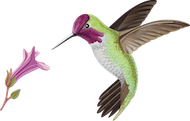Groundbreaking Ceremony for the Children’s Wildlife Pond
The pond will be a teaching tool for visitors, especially school children.
Connecting fragmented pieces of habitat can help endangered species recover
When farms or roads carve forests or fields into fragments, the isolated survivors are more likely to be wiped out. Now, a new study suggests connecting these patches with corridors of suitable habitat can help save populations and species—far more than scientists ever thought.
Taylor’s Top 5 “New to Us” Pollinator Plants
With the Arboretum Teaching Nursery nearly at plant capacity, we finally have a moment to appreciate many of the new pollinator plants we have been growing for you this fall.
California Native Plant Library
When you visit the Theodore Payne Foundation nursery, you’ll discover that every plant has a placard that provides detailed information on that plant. Let’s explore.
LA Zoo Asks Public to Toss Their Tusks
The Los Angeles Zoo kicks off a campaign that will ask Americans across the nation to get rid of their ivory products by providing a free-drop off.
Nature Close to Home
Xerces executive director Scott Hoffman Black encourages you to “reimagine your garden: increase the diversity of native plants, ensure that there are places for insects to nest, and avoid using pesticides.”
Rare California trout species returns to native habitat
For the first time in nearly a century, a rare California trout species is swimming in a mountain creek that is its native habitat, marking a major milestone that conservationists hope will lead to a thriving population and removal of its threatened status.
A Marine Heat Wave Intensifies, with Risks for Wildlife, Hurricanes and California Wildfires
The last Pacific ‘warm blob’ killed seals and birds, shut down crab fisheries and also affected the land, worsening drought and wildfire risk in California.
Seabird “Preyscapes” in the Age of Climate Change
How breeding seabirds respond to climate-driven changes in their food sources
Just how dangerous are balloons for the environment and wildlife?
According to the Wildlife Center of Virginia in Waynesboro, balloon remnants fall into bodies of water such as streams, lakes and oceans, and can take months to years to fully break down.

